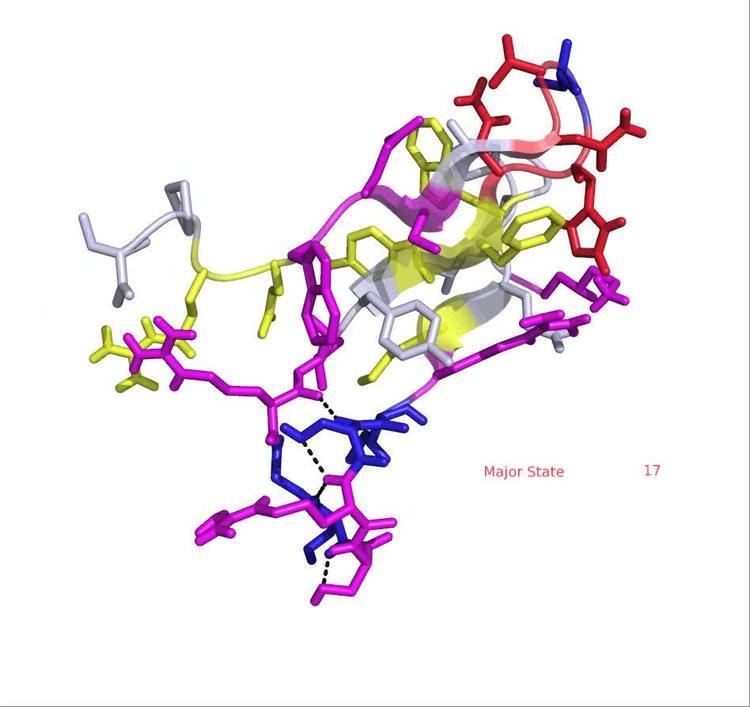 | ||
Conformational ensembles, also known as structural ensembles are experimentally constrained computational models describing the structure of intrinsically unstructured proteins. Such proteins are flexible in nature, lacking a stable tertiary structure, and therefore cannot be described with a single structural representation. The techniques of ensemble calculation are relatively new on the field of structural biology, and are still facing certain limitations that need to be addressed before it will become comparable to classical structural description methods such as biological macromolecular crystallography.
Contents
The purpose of conformational ensembles
Ensembles are models consisting of a set of conformations that together attempt to describe the structure of a flexible protein. Even though the degree of conformational freedom is extremely high, flexible/disordered protein generally differ from fully random coil structures. The main purpose of these models is to gain insights regarding the function of the flexible protein, extending the structure-function paradigm from folded proteins to intrinsically disordered proteins.
Ensemble calculation techniques
The calculation of ensembles rely on experimental measurements, mostly by Nuclear Magnetic Resonance spectroscopy and Small-angle X-ray scattering. These measurements yield short and long-range structural information.
Short-range structural information
Long-range structural information
Constrained molecular dynamics simulations
The structure of disordered proteins may be approximated by running constrained molecular dynamics (MD) simulations where the conformational sampling is being influenced by experimentally derived constraints.
Selection of conformers describing the experimental data
Another approach uses selection algorithms such as ENSEMBLE and ASTEROIDS. Calculation procedures start by generating a pool of random conformers sampling the conformation space. Theoretical parameters are calculated for each conformer and the selection algorithms create the final ensembles by selecting a set of conformers that are fitting to the experimentally derived constraints.
Availability of structural ensembles
Since the calculation of ensembles rely on lower resolution techniques, the Protein Data Bank is not accepting these models. Recently the Protein Ensemble Database (pE-DB) was released, which is an open access online repository of the structural ensembles and their underlying experimental data. The availability of the ensembles should facilitate the development of validation and evaluation protocols improving the quality and predictive power.
Limitations
Several slightly different ensemble may describe the experimental data equally well, and currently there are no methods to discriminate between ensembles of equally good fit. This renders the identification of the 'best' ensemble impossible.
